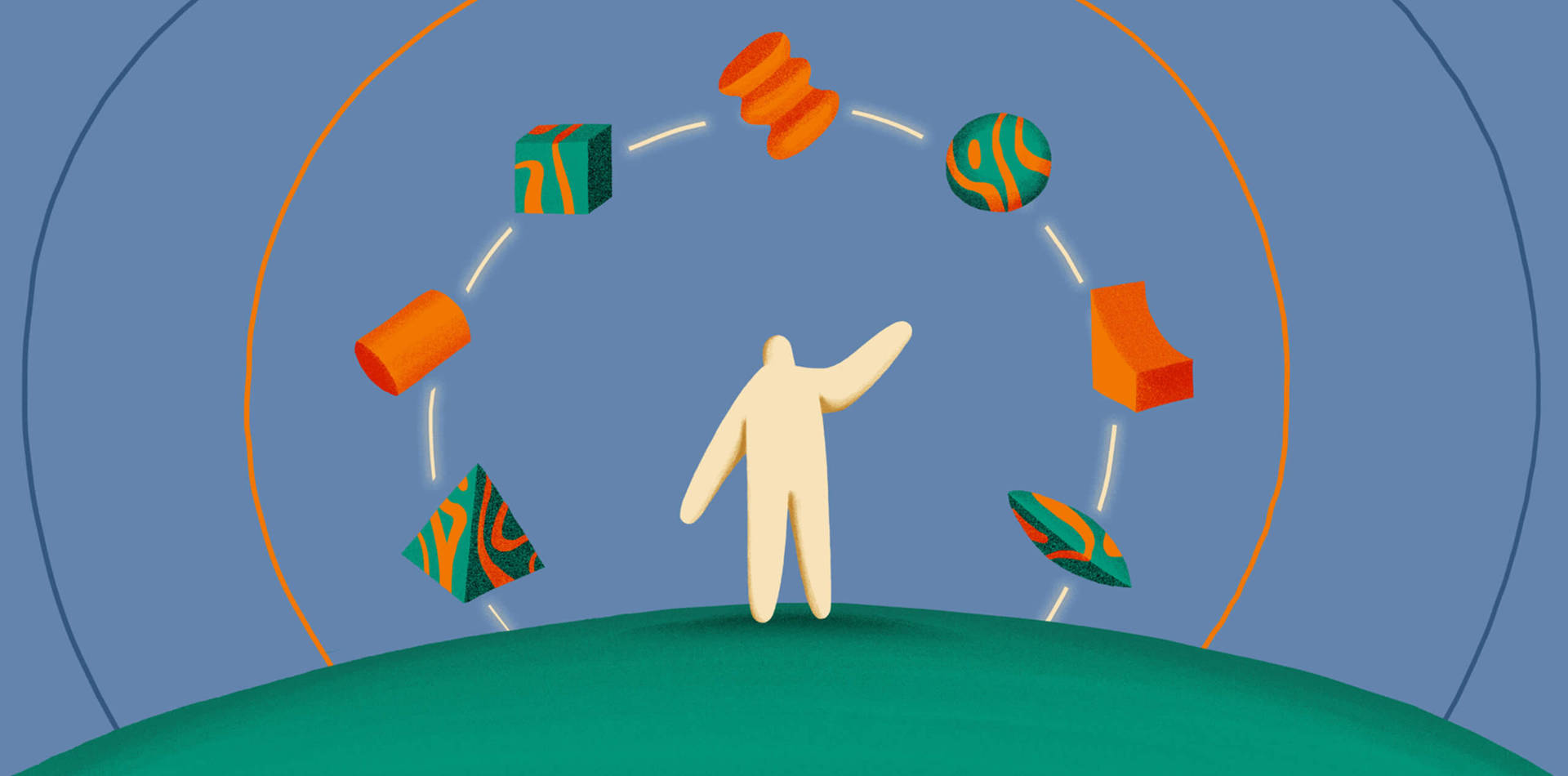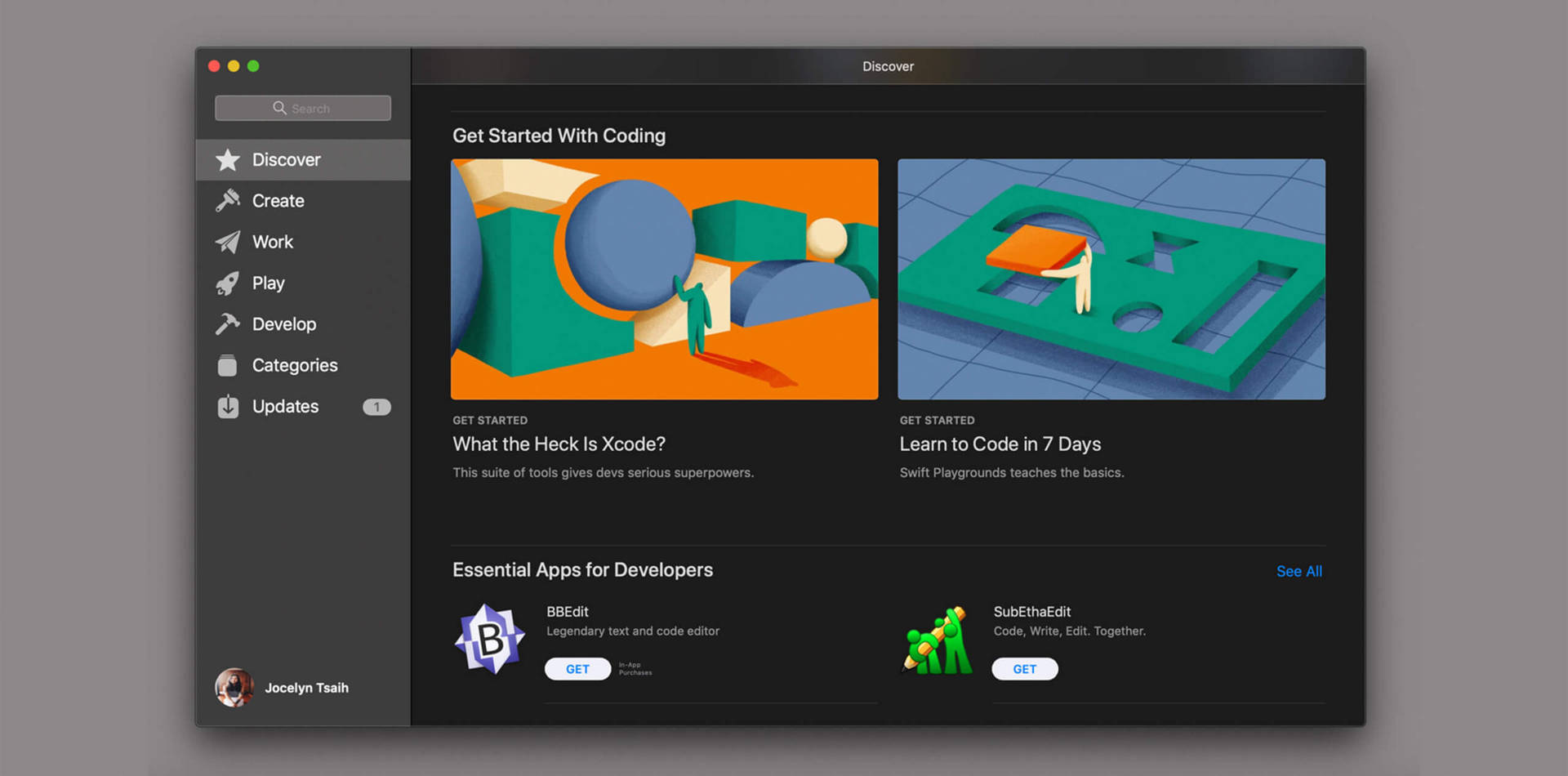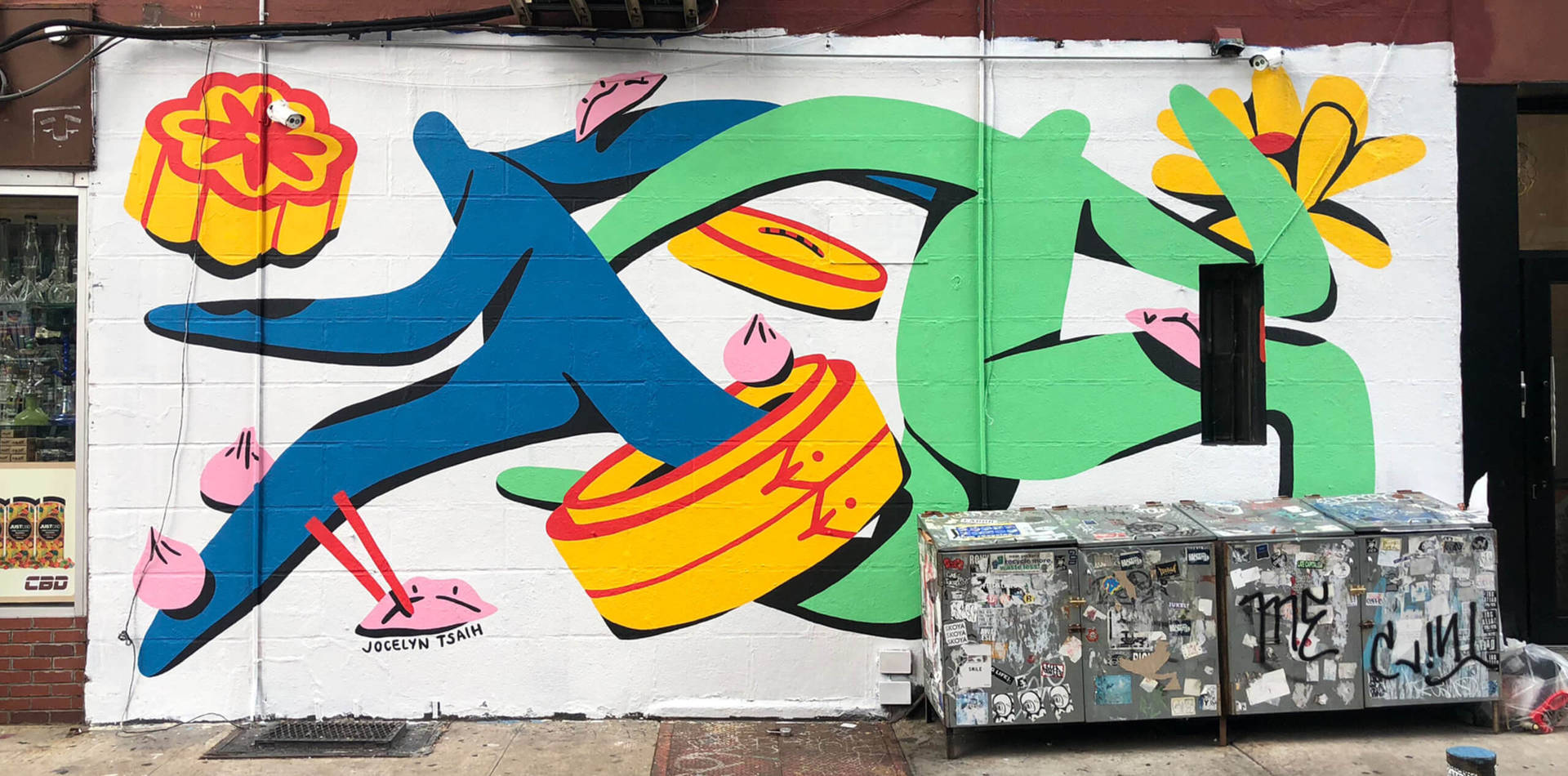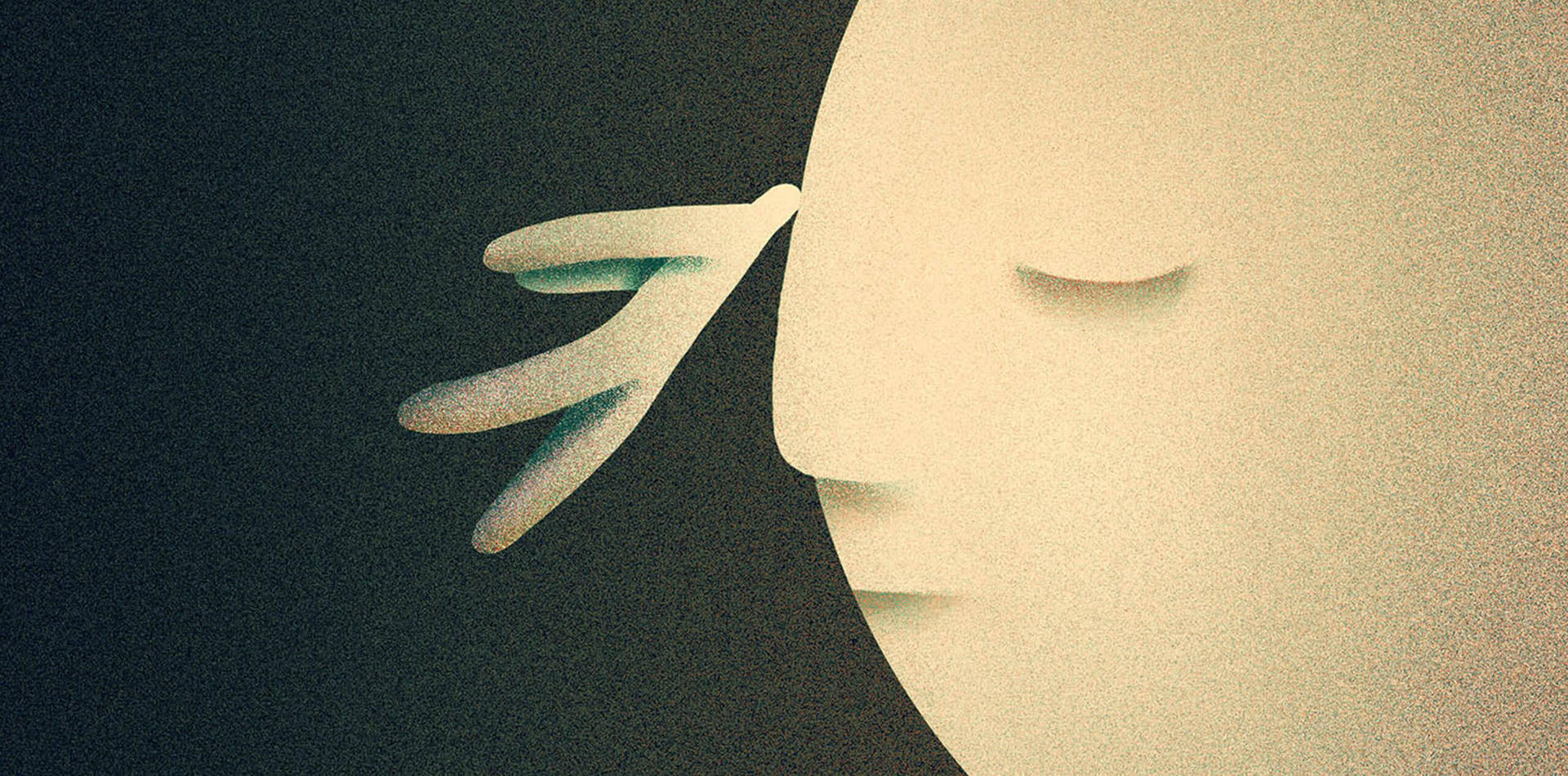Visual artist Jocelyn Tsaih’s work is introspective in nature and filled with a strong sense of closely observed human nature. Working across a range of different media such as painting, mural-making and illustration, the recurring amorphous figures in Jocelyn’s illustrations are abstract forms used to tell stories and embody different aspects of what it means to be human, including our emotions, the relationships we form, and the subconscious part of ourselves. Whether it’s illustrations for Apple, stickers for Snapchat, or being an Artist in Residence for Facebook, her work has a unifying theme in the exploration of human experience.
Taiwan-born, Jocelyn’s background has shaped her creative outlook and the way she views the world. She grew up in Shanghai before moving to New York City, where she graduated at SVA (School of Visual Arts), and has recently moved to California. Growing up as a ‘big city person’, Jocelyn is now learning to adjust to a slower pace of life and work, which has taken her out of her comfort zone and is reflected in the evolution of her visual style. Jocelyn also cites conversations with friends and strangers as sources of inspiration and strives to create work that captures a mood and evokes emotion. As she tells us, ‘My style is still evolving, and I love being able to try new things to see how I can push myself to grow while working within the limits of illustrating the figures.’
Jocelyn believes that strong, powerful connections can be created through art. She regularly takes part in community activities aimed at bringing people together and in the past year organised fundraiser campaign Save Our Chinatowns in support of local Chinatown communities. She uses used her creative talent to focus attention on issues she cares about, such as the anti-Asian prejudice that has become more prevalent since the pandemic began.
As a woman in the creative industry, Jocelyn is excited and proud to be surrounded by a community of women who support and uplift one another. Being an AAPI artist, she has often observed that artists of colour tend to be ‘pigeonholed’ into delimited paths and is strongly against gatekeeping in the art world. Jocelyn hopes to see more dialogue and openness, to ensure that future generations have easier access to education and professional experience in the creative industry: ‘Sometimes it feels as though we are only relevant if we’re making work that directly speaks to our experience as POC. I’d like to see more BIPOC, transgender, and gender non-conforming voices being celebrated no matter what month of the year it is.’
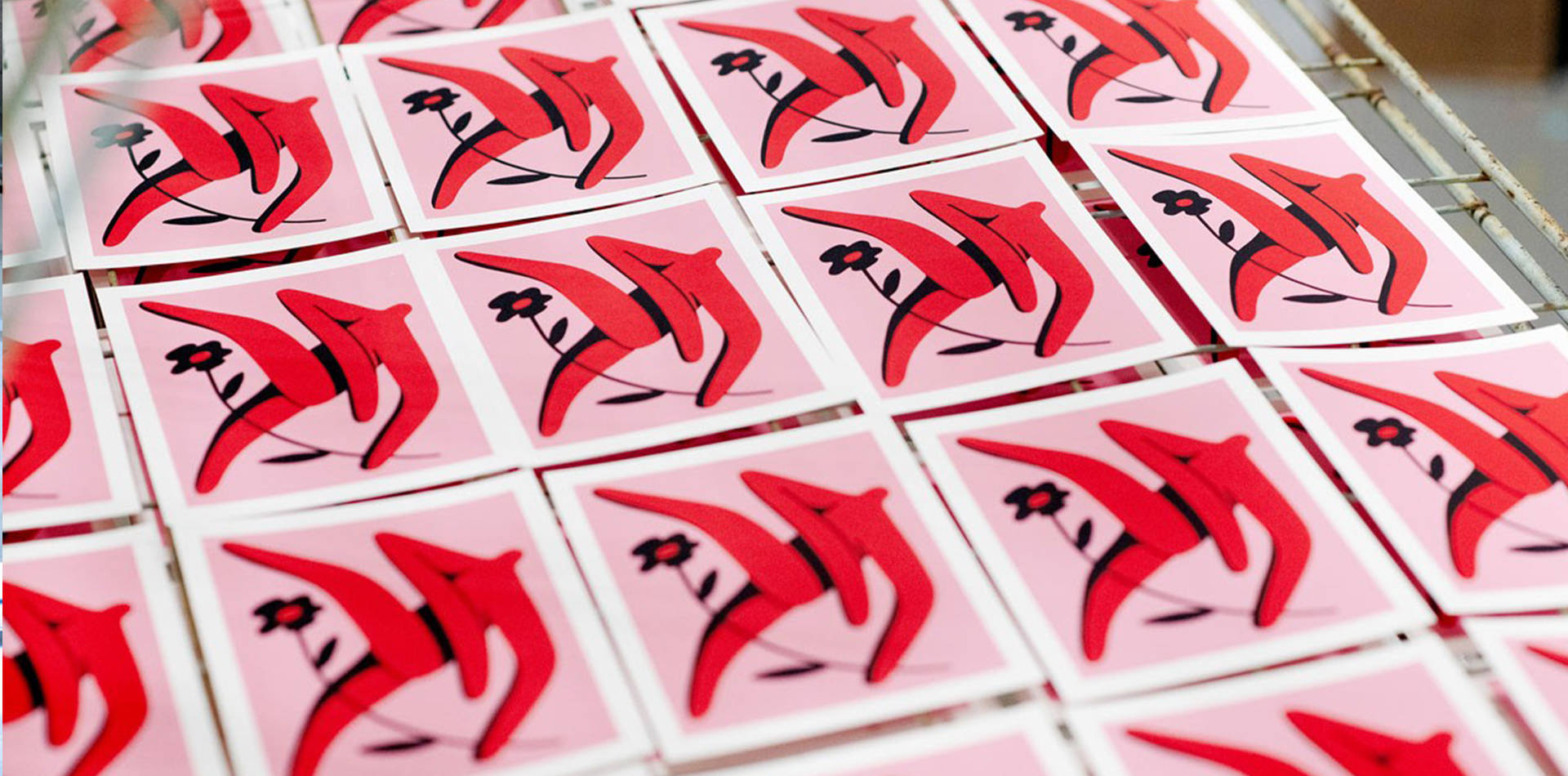
We caught up with Jocelyn to find out more about what inspired her to be an illustrator, her evolving visual style, and the exciting new projects she’s recently been working on.
How did you first become interested in working as an illustrator and mural artist?
I recently realised how the cartoons and anime I watched as a kid might have influenced my interest in drawing and illustration. Growing up, I was obsessed with Studio Ghibli films, and I believe there was a part of me that always wanted to dream up alternate worlds like the ones I saw in those movies. I used to think that I could achieve this level of storytelling through writing but realised later on that my strength lay in visual expression.
In 2016, a year after I graduated from the School of Visual Arts, I joined the Art & Graphics team at WeWork. Drawing, illustration, painting, and design were all part of the job. My team and I also got to design and paint murals in different WeWork offices around the world. It was extremely rewarding to see our work on a larger scale and in physical environments, and I immediately fell in love with the process of creating murals.
Can you tell us a bit about your career path and how you got to where you are now?
I’ve been a freelance illustrator for two years now. Before I took that leap, I was working full-time at WeWork. Prior to WeWork, I had worked at a bunch of different creative jobs to figure out what I enjoyed doing and what I did not. Some of these jobs included freelance branding projects, drawings for an inventor trying to patent one of his creations, web graphics for a fashion company’s newsletters, illustration for Nickelodeon products, animation for apps and music videos, and so on…
Throughout all my jobs, what remained consistent was my drive to create work for myself on my own terms. I was very motivated to make things and find ways to challenge myself. The combination of experiences in past jobs and the consistent process of making personal work, allowed me to find my own voice within illustration. The evolution of my work and career has been pretty gradual. I believe every little step helped me get to where I am today.
Didn’t Know I Had It In Me: This painting was made at the beginning of the year while I was exploring a new way of painting and exploring what I wanted to create for my solo show in August.
How have you developed you visual style throughout your career and have there been any pivotal moments?
When I first started illustrating I mainly drew in black and white. On one hand, I think I was intimidated by the range of colours I could choose from. On the other hand, I felt like black and white was enough to convey the messages I wanted to send at the time. Naturally I became curious about using more colours, but I first stuck with primary colours because that felt comfortable and safe. It wasn’t until I became more confident in my voice as an illustrator that I started to truly experiment –to play more with colour, allowing my recurring figure to take on different shapes, incorporating textures, and working on lighting and shadows. My style is still evolving. I love being able to try new things, to see how I can push myself to grow while working within the limits of illustrating the figures.
Where do you get your inspiration from, and how do you approach a new project?
I am largely inspired by other art forms, such as music, film, writing, and dance. I’m always in awe of artists that can capture moments and moods in ways that evoke certain emotions. I strive to do the same through my work.
I’m also inspired by candid conversations with friends and strangers. Ideas for drawings are often sparked during these conversations or during my reflections of these conversations. I often jot down words or thoughts before doing any sketches. After sitting with the concept of what I’m trying to capture for a while, I start to formulate visual ideas that might “properly” translate my thoughts into an image.
Mac App Store: This series of illustrations was done for Apple’s Mac App Store. The illustrations were paired with different articles and resources about the coding apps that the store offered. This was a fun challenge because I knew very little about coding apps and got to learn a little more about them through the process.
Tell us about a standout project that you’ve worked on and why it’s important to you.
I’m currently working on a series of new paintings for a solo show in August. The work is pretty melancholic, and to make it I have to be vulnerable and very honest with myself. I think this is the first time I’m truly embracing vulnerability within my work. In the past, I’ve made a lot of melancholic works but felt too insecure to directly communicate the thought behind them. Making this current body of work is cathartic for me and I’m glad that I’m feeling a lot more comfortable about sharing in this way.
How has being a woman impacted your career?
One of my favourite things about being a woman in the creative world is meeting so many other badass women. I’m constantly inspired by the other women artists I have the pleasure of knowing. I think there’s a strong sense of community and I’m always happy to see us uplifting one another.
Through my mural painting experience, I have to say that being a woman painting a mural seems a lot different than a man painting a mural. People often assume that I’m not in charge when I’m on-site with an assistant that happens to be a man. Sometimes it feels as though I’m not being taken seriously and that people think I’m just painting a mural for my arts and crafts hobby.
Let’s talk about your experiences working in NYC and in the West Coast. Are there any major differences, for examples in the creative community, or the type of work you were briefed?
It has been so interesting observing the differences between NYC and California! Coming from NY, I was really used to the bursting creative energy and drive that most people had there. California is much more laid back and people live and work at a different pace. To be honest, I’m still unsure which pace I prefer. Having grown up in Shanghai and being a “city person” my whole life, I feel like I’m out of my comfort zone here in the Bay Area, since I’m forced to slow down a bit. I think the change is healthy and needed, but I do find myself craving the hustle and bustle of a city like NY or Shanghai.
Chinatown Mural: In the summer of 2019, I was invited to paint a mural in New York’s Chinatown. Though I was no longer living in New York, I was honored to paint a piece in the neighborhood that I had resided in for a couple of years. I wanted to capture the lively, bustling spirit of the area as well as highlight the abundance of good food in Chinatown.
Can you tell us about your experience as an AAPI woman designer. What actions to promote equality and diversity in the creative industries today would you like to see implemented?
As an East Asian woman in the creative industry, and as someone who has had the support of my family in studying art, I recognise that I have a lot of privileges. I often think about the gatekeeping that exists in the art world and how art education and professional knowledge should be made more accessible. I think initiatives like Fuck Gatekeeping are incredibly important because they provide a platform for people to connect and share information openly.
Something else I’ve come to observe as an AAPI woman artist is that we tend to be pigeonholed into certain subjects or career paths. Sometimes it feels as though we are only relevant if we’re making work that directly speaks to our experience as POC. I’d like to see more BIPOC, transgender, and gender non-conforming voices being celebrated no matter what month of the year it is.
You often work on personal projects aimed at supporting communities and groups. Can you tell us about why you decided to use your creative skills to support such causes?
Art has become such a vital tool in spreading awareness and bringing communities together. I’m inspired by how others have been using their design and art skills to support causes and create change. Since COVID started, I’ve been trying to do the same, to help communities that have been disproportionately impacted. I realised that I could use social media, specifically Instagram, to fundraise for certain causes. I also realised that every time I had an idea for a project aimed at supporting communities, I wouldn’t be alone. There would always be other creatives ready and willing to help. I really don’t think of this aspect as part of my career. I think of it more as a way of utilising my strengths to help raise awareness of issues about which I care deeply.
Healing: I created this illustration at the height of the anti-Asian hate crimes of recent months. I was having a hard time processing the news of the violent attacks, especially the ones targeting our elders. Drawing this was a form of healing and catharsis.
Do you have any female role models or mentors who have shaped your career?
My mom has always been one of my role models. She is self-aware, strong-willed, and ambitious. When I was 13, she started a completely new career as a yoga instructor and co-owner of a yoga studio. I watched her build a community and a meaningful business based on her passion for wellness and health. She has always been supportive of me as a person and an artist. She has taught me, either subconsciously or consciously, to always stand up for myself and to be proud of my achievements. I’m very lucky to have a role model like her.
Inspiration shout outs:
Follow:
Visit:
Article by Laura Bertinelli
Laura Bertinelli is one of our wonderful DesignbyWomen collaborators.


